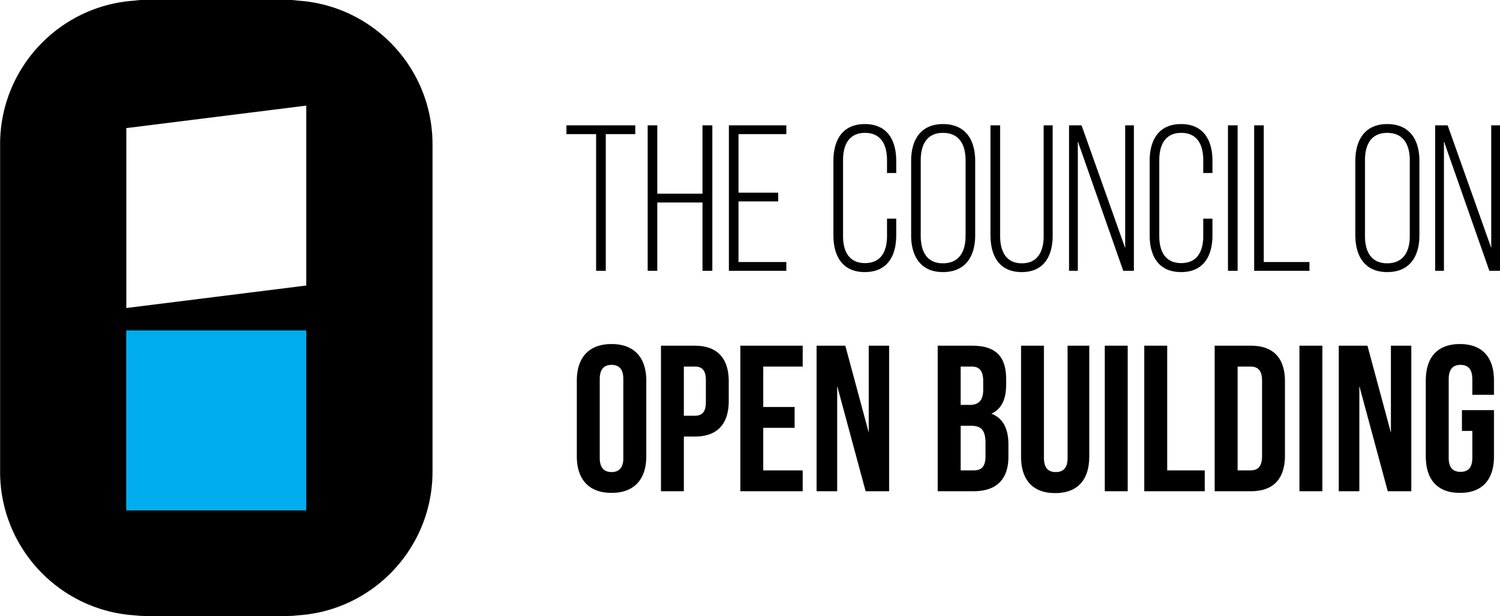THE COUNCIL ON OPEN BUILDING
Build for the Future/The Future of Building
The mission of the Council is to increase the capacity of the built environment to accommodate diverse uses and incremental change across project types over time. The Council provides information, training and leadership in support of this mission.
The vision of the Council is to foster transformational improvement, across project types, in new construction built for the future; in ‘reactivating’ the existing building stock for long-term value; and in achieving a high-quality, resilient and sustainable built environment through widespread adoption of Open Building principles and practices
The specific objectives and purpose of this organization are:
a. To create demand for Open Building among owners of all project types
b. To focus outreach on progressive market-leading owners in key markets
c. To create new capabilities in the building sector to meet this demand across project types by leadership training, mentoring, support for clients and the design and construction community
d. To establish metrics for evaluating capacity for incremental change in built environment at all levels of intervention (e.g. urban design; architecture; interior architecture; furnishing, fixtures and equipment)
e. To maintain a website in which case studies and other relevant information are made available
f. To organize periodic local seminars and national and international conferences
g. To advocate and support research to support the above
THE FUTURE IS OPEN BUILDING
THE COUNCIL ON OPEN BUILDING’S MISSION IS TO DEVELOP AND SHARE THE KNOWLEDGE AND SKILLS. NEEDED TO EMBUE THE BUILT ENVIRONMENT AT ALL LEVELS WITH THE BUILT-IN CAPACITY FOR VARIATION AND CHANGE.
Cities and towns are undergoing constant transformation as growth accelerates, market demands evolve and demographics shift. Across every major building market – whether commercial, residential, healthcare or institutional, changing demands in use and operation demand more flexibility and the inherent capability to adjust to changing circumstances. Buildings with the fundamental qualities and characteristics that enable change are being repurposed while those that reflect rigid planning concepts are being demolished and replaced. Buildings that could last a century are being rendered obsolete in a matter of a few years or decades, at great social and economic cost. In the interest of greater sustainability and resilience, we. need to think more deeply about the way we design buildings.
OPEN BUILDING REPRESENTS A FUNDAMENTAL SHIFT IN THE WAY WE PLAN OUR CITIES, NEIGHBORHOODS, BUILDINGS AND INSTITUTIONS.
When we set our minds to designing long lasting buildings and cities, we build in the capacity for changing uses and floor plans; we configure building systems prepared to accommodate parallel initiatives by different users without conflict or disruption; and we clarify the distinction between permanent and changeable components that make up the constructed environment. The Open Building approach fosters a pragmatic balance between permanence and change. In the race to build and achieve rapid return on investment, we are favoring obsolescence over adaptability; we must do better if we are to support a more resilient and sustainable world.
Investors are building increasingly large scale, complex, mixed use projects, within tighter timeframes. Smart investors want to and should be able to keep their options open - during the long process from decision-to-build to initial occupancy, as well as over the life of the asset.
THE OPEN BUILDING APPROACH HELPS REALIZE BOTH NEAR-TERM RETURN-ON-INVESTMENT AND LONG-TERM VALUE.
The benefits are three-fold: social, economic and qualitative. We believe buildings with the inherent capacity for change ensure the enhanced and long-term vitality of the urban environment. Big buildings that are successful CAN AND DO change. Living buildings are never finished!
MEASURING OPEN BUILDING.
We know an Open Building when individual units of occupancy can be changed and upgraded without disturbing neighboring occupancies or their shared infrastructure. The key concept is CAPACITY at each LEVEL OF DECISION-MAKING.
